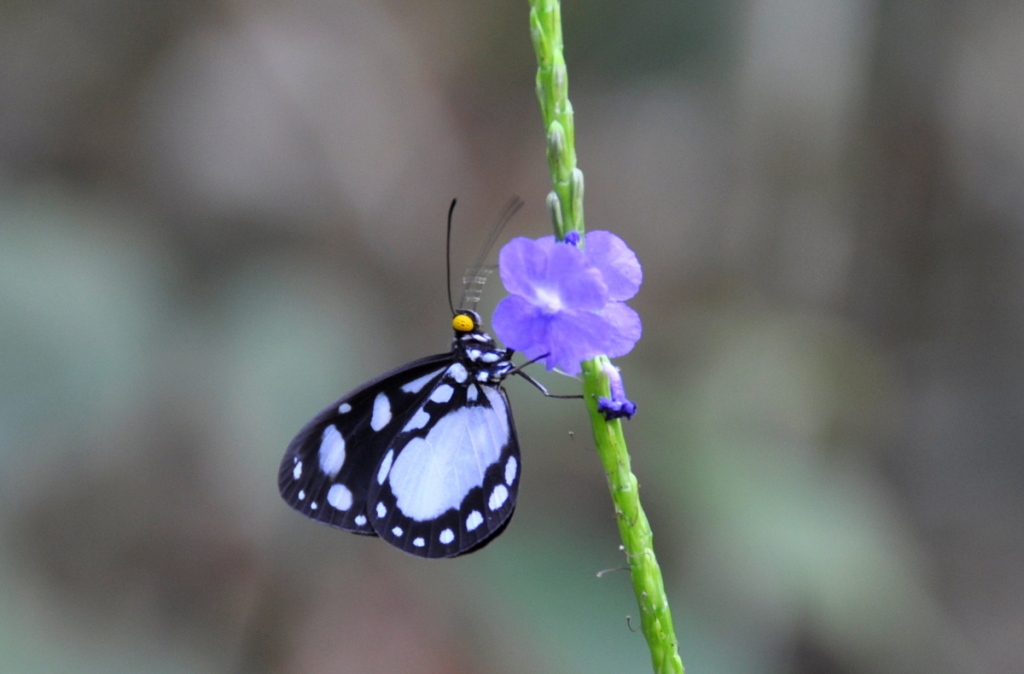We’ve had a few drizzly Daintree days recently – probably our least favourite weather when there is just enough rain to make outside work unappealing. It’s not cold but on those drizzly days everything feels damp and I long for a few hours of sunshine.
In the last few months, while Allen has been gradually recovering from an unfortunately rapid descent through one of our Mangosteen trees, he has been using his lighter Olympus camera as he quietly wanders around our tracks. While we have both always admired and photographed butterflies this year Allen has managed to take photos of a few species we had not previously identified. He has the required patience and has also been inspired by the recent acquisition of a new book. ‘A Field Guide to Butterflies of Australia’ written by Gary Sankowsky is a companion volume to his ‘All About Butterflies of Australia’ both published by Reed New Holland. The descriptions of both butterflies and their host plants in addition to photographs of both make identification so much easier and we’ve been having a lot of fun sharing the pleasure of learning.
The butterflies in the following photos are all members of the family Pieridae, known in a general sense as Whites and Yellows.

We have several different species of Mistletoe and many of them are suitable host plants for this colourful butterfly. Gary describes it as usually being found in rainforest and spreading out to Melaleuca wetlands near the coast which makes this property perfectly suited. It is not surprising that it is our most commonly sighted species of Delias but as similar bright colours occur in many of the Jezabels it is always worth a careful look to confirm identification.



Here is an example of ‘yellow’ – like sunshine on the wing!

Lemon migrants have a slight colour variation, during the wet season they appear in lemon/lime tones.

Common Grass Yellows are indeed both common and widespread over much of Australia. They are delightfully active butterflies, with gorgeous yellow wings giving colour and movement to our landscape.

‘Yellows’ can be hard to positively identify without a photo and digital photography gives us the opportunity for a close look. I must admit that I rather naively expected the host plant list to at least include some grasses but this does not appear to be so. There is quite an extensive list of host plants which helps explain their wide distribution. Gary Sankowsky has listed the Best Garden Host Plant as Breynia stipitata, a local rainforest species known as Fart Bush which readily self-sows in our garden. While I know its little red berries are consumed by birds, apparently not sensitive to their toxicity, I am glad to know that its leaves are providing food for the Common Grass Yellow larvae.
















